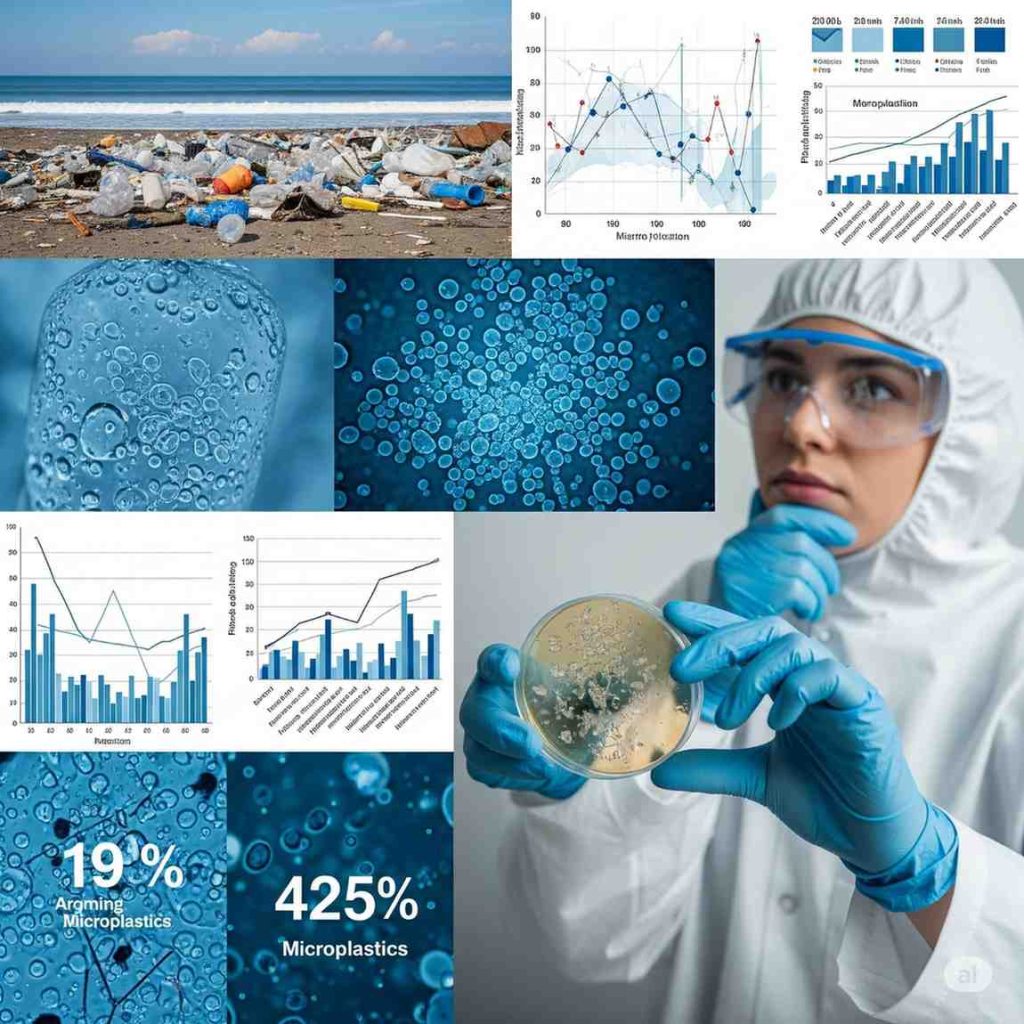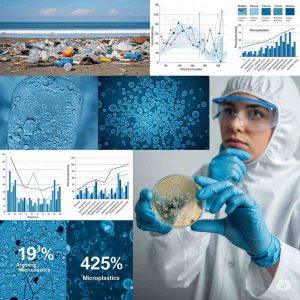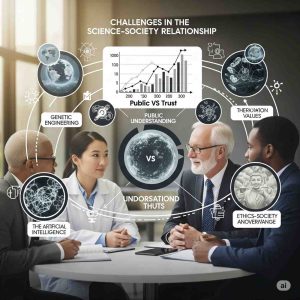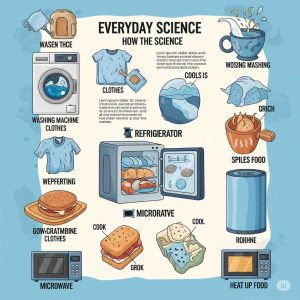Plastic Pollution Facts: Shocking Truths You Need to Know
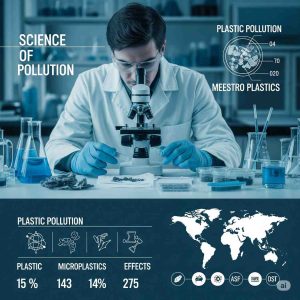
While plastic has revolutionized industries and made life more convenient, its environmental cost is staggering. This article explores scientific facts about plastic pollution—revealing how it impacts nature, wildlife, and even human health.
Plastic Pollution Facts: Shocking Truths You Need to Know
1. What Is Plastic Pollution?
Plastics are synthetic polymers that are non-biodegradable, meaning they can take hundreds of years to break down.
2. Shocking Scientific Facts About Plastic Pollution
Here are the most eye-opening plastic pollution science facts based on global studies:
✅ Over 400 Million Tons of Plastic Are Produced Annually
✅ Only 9% of All Plastic Waste Gets Recycled
Plastic Pollution Facts: Shocking Truths You Need to KnowThe rest is either incinerated (19%), landfilled (50%), or leaked into the environment (22%).
✅ Plastic Takes 450–1,000 Years to Decompose
Plastic doesn’t biodegrade—it photodegrades, breaking into microplastics. A single plastic bottle can take up to 1,000 years to fully degrade.
✅ Every Ocean Now Contains Microplastics
Microplastics—tiny plastic particles less than 5mm in size—have been found in every ocean, from the Arctic to the deep sea. A 2020 study in Nature found microplastics in 114 aquatic species. Plastic pollution science facts”Plastic Pollution Explained: Scientific Facts That Matter”
✅ Marine Animals Mistake Plastic for Food
Plastic Pollution Facts: Shocking Truths You Need to Know
Over 700 marine species, including turtles, whales, and seabirds, have been affected by plastic ingestion or entanglement.
✅ Humans Consume 5 Grams of Plastic Weekly
A study by the University of Newcastle (commissioned by WWF) shows the average human ingests 5 grams of plastic per week—the equivalent of a credit card—through food, water, and air.Plastic pollution science facts”Plastic Pollution Explained: Scientific Facts That Matter”
3. Where Does All This Plastic End Up?
Landfills: About 50% of all plastic waste ends up in landfills, where it remains for centuries. Plastic pollution science facts”Plastic Pollution Explained: Scientific Facts That Matter”
Rivers: Major rivers like the Ganges, Yangtze, and Nile act as pipelines, carrying land waste to the seas.
4. Scientific Solutions to Plastic Pollution
♻️ Bioplastics and Alternatives Plastic pollution science facts”Plastic Pollution Explained: Scientific Facts That Matter”
These decompose much faster and with less environmental harm.
🔬 Plastic-Eating Bacteria
In 2016, researchers discovered bacteria that can break down PET plastic. While still in the experimental stage, this innovation offers hope for future waste management.
🌱 Waste-to-Energy Conversion
Advanced methods are now turning plastic waste into usable fuel or energy, reducing the amount going to landfills.
5. How You Can Make a Difference
Even small actions make a big impact when multiplied. Here’s how individuals can contribute:
Avoid single-use plastics. Plastic pollution science facts”Plastic Pollution Explained: Scientific Facts That Matter”
Carry reusable bags, bottles, and straws.
Support brands that use eco-friendly packaging.
Educate others on plastic pollution science facts. Plastic Pollution Facts: Shocking Truths You Need to Know
Participate in beach or river clean-ups. Plastic pollution science facts”Plastic Pollution Explained: Scientific Facts That Matter”
- What Are the Scientific Facts About Plastic Pollution?
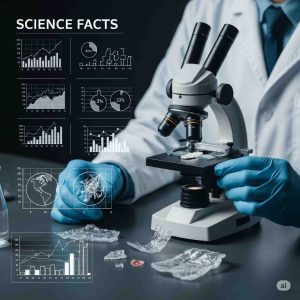
Plastic pollution is a rapidly growing environmental concern that affects every corner of our planet. From the depths of the oceans to the highest mountains, plastic waste has infiltrated natural ecosystems, endangering wildlife and threatening human health. But what does science really say about plastic pollution? In this article, we explore verified scientific facts that reveal the true scale, sources, and consequences of this modern-day crisis. Plastic Pollution Facts: Shocking Truths You Need to Know
1. Global Plastic Production Is Skyrocketing
One of the most significant scientific observations is the sheer scale of global plastic production. According to the United Nations Environment Programmer (UNEP), the world produces more than 430 million tonnes of plastic each year. Nearly two-thirds of that is designed for single-use—meaning it is discarded within minutes or hours of use. Plastic Pollution Facts: Shocking Truths You Need to Know
If this trend continues, plastic production is expected to double by 2050, resulting in even greater pollution. Plastic Pollution Facts: Shocking Truths You Need to Know
2. Plastics Take Centuries to Decompose
Plastics are made from synthetic polymers that are resistant to natural degradation. According to studies from the National Oceanic and Atmospheric Administration (NOAA), a single plastic bottle can take 450–1,000 years to break down. Even then, it doesn’t biodegrade completely—it breaks down into microplastics that remain in the environment indefinitely. Plastic Pollution Facts: Shocking Truths You Need to Know
3. Microplastics Are Everywhere—Even Inside Us
One of the most alarming scientific discoveries in recent years is the spread of microplastics—tiny plastic particles less than 5mm in diameter. Microplastics have been found in remote parts of the Arctic, deep-sea trenches, and even human organs and blood.
A 2021 study published in the journal Environment International confirmed the presence of microplastics in human blood samples, raising serious questions about long-term health effects. Plastic Pollution Facts: Shocking Truths You Need to Know
4. Oceans Receive Over 11 Million Tonnes of Plastic Waste Annually
According to the Pew Charitable Trusts and SYSTEMIQ’s 2020 report, over 11 million metric tonnes of plastic enter the oceans every year. This number could triple by 2040 if current practices continue. Plastic Pollution Facts: Shocking Truths You Need to Know
The plastic that ends up in oceans poses severe risks:
- Entanglement: Marine animals get trapped in fishing nets, plastic rings, and bags.
- Ingestion: Turtles, birds, and fish often mistake floating plastic for food.
- Habitat destruction: Coral reefs and coastal ecosystems are degraded by plastic waste.
5. Plastic Pollution Kills Wildlife Across All Ecosystems
These include whales, dolphins, turtles, seabirds, and fish. Plastic ingestion can block digestive systems, cause internal injuries, or even trick animals into thinking they’re full, leading to starvation. Plastic Pollution Facts: Shocking Truths You Need to Know
For example:
- In 2019, a sperm whale was found dead in the Philippines with 88 pounds of plastic in its stomach.
- Sea turtles often mistake plastic bags for jellyfish, their natural prey, and die as a result of ingestion.
The World Wide Fund for Nature (WWF) estimates that 90% of seabirds have plastic in their stomachs—a number that was just 5% in 1960. Plastic Pollution Facts: Shocking Truths You Need to Know
6. Land-Based Sources Contribute to 80% of Marine Plastic Pollution
These include:
- Urban waste and litter
- Industrial discharges
- Improperly managed landfills
- Wastewater systems
Major rivers like the Ganges, Yangtze, and Nile act as conduits for plastic waste, carrying it from cities to the oceans.
7. Plastic Pollution Contributes to Climate Change
Plastic is made from fossil fuels—mainly crude oil and natural gas. A report by the Center for International Environmental Law (CIEL) reveals that plastic production and incineration could emit over 2.8 gigatons of CO₂ per year by 2050.
This makes plastic pollution not just a waste problem but also a contributor to global warming. Plastic Pollution Facts: Shocking Truths You Need to Know
8. Plastic Waste Is Found in the Food Chain
Microplastics have entered the food chain through marine and terrestrial organisms. They’ve been detected in:
- Seafood (fish, shellfish)
- Sea salt
- Bottled and tap water
- Honey and sugar
This raises concerns about bioaccumulation—where plastic particles and associated toxins (like BPA, phthalates, and PCBs) accumulate in organisms, including humans. Plastic Pollution Facts: Shocking Truths You Need to Know
9. Plastic Is Found in the Air We Breathe
Recent atmospheric research shows that plastic particles are airborne, especially in urban areas. A 2020 study published in Science found that microplastics travel in the wind and can be inhaled by both animals and humans.
Inhaling these particles may cause respiratory irritation, lung inflammation, or even more severe health issues, though long-term effects are still being studied. Plastic Pollution Facts: Shocking Truths You Need to Know
10. Innovative Scientific Solutions Are Emerging
While the facts are alarming, science is also providing solutions:
- Biodegradable plastics made from starch, algae, and sugarcane are under development.
- Plastic-eating bacteria and enzymes, such as Ideonella sakaiensis, show potential for breaking down PET plastic.
- Waste-to-energy technologies are converting plastic waste into fuels.
- Circular economy models focus on reducing, reusing, and recycling plastic more efficiently.
Several international agreements, including the UN Global Plastics Treaty (in progress), aim to reduce plastic production and waste globally. Plastic Pollution Facts: Shocking Truths You Need to Know
What Are 10 Facts About Plastic?
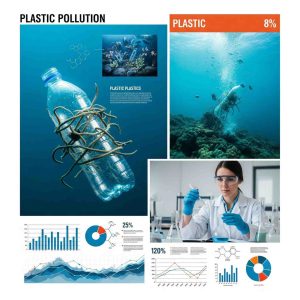
It has transformed industries, simplified daily life, and become an essential part of modern society. However, its widespread use has also created massive environmental problems. This article explores 10 important and science-based facts about plastic—from its origin to its impact on nature and human health.
✅ 1. Plastic Was Accidentally Invented in the 20th Century
Plastic is a man-made material derived mostly from fossil fuels like crude oil and natural gas. The first synthetic plastic, Bakelite, was invented in 1907 by Belgian chemist Leo Baekeland. His discovery marked the beginning of the plastic era, and by the 1950s, mass production of plastic products had begun. Plastic Pollution Facts: Shocking Truths You Need to Know
Interestingly, many plastics were invented accidentally during chemical experiments, including PVC (polyvinyl chloride) and Teflon.
✅ 2. The World Produces Over 430 Million Tons of Plastic Each Year
This number is rapidly increasing. Shockingly, more than half of this plastic is single-use, meaning it’s thrown away shortly after being used.
By 2050, scientists estimate plastic production could double, unless we take serious action to reduce its use and recycle it efficiently.
✅ 3. Only 9% of Plastic Ever Produced Has Been Recycled
Around 19% is incinerated, and the rest—over 70%—ends up in landfills or the environment.
Plastic’s resistance to degradation and the lack of proper waste management systems are key reasons for this low recycling rate.
✅ 4. Plastics Can Take Hundreds to Thousands of Years to Degrade
Plastic is durable, which is both a blessing and a curse. Different types of plastic have different lifespans, but here are a few average decomposition times: Plastic Pollution Facts: Shocking Truths You Need to Know
-
Plastic bags: 10–20 years
-
Plastic bottles: 450 years
-
Fishing lines: 600 years
-
Styrofoam containers: 500+ years
Instead of biodegrading, plastic photodegrades, breaking into microplastics, which remain in the environment indefinitely. Plastic Pollution Facts: Shocking Truths You Need to Know
✅ 5. Plastic Has Been Found in the Deepest Parts of the Ocean
In a 2018 study, researchers found plastic fibers and wrappers in the stomachs of sea creatures from this remote region. This shows that no part of the planet is untouched by plastic waste. Plastic Pollution Facts: Shocking Truths You Need to Know
✅ 6. Microplastics Are in Our Food, Water, and Even Air
They come from broken-down plastic waste, synthetic clothes, tires, and personal care products.
Scientific studies have found microplastics in:
-
Bottled and tap water
-
Salt, sugar, and honey
-
Fruits and vegetables
-
Seafood like mussels and fish
-
Human blood and lungs
In fact, the average person may consume 5 grams of plastic per week—equivalent to the size of a credit card. Plastic Pollution Facts: Shocking Truths You Need to Know
✅ 7. Plastic Pollution Kills Millions of Marine Animals Each Year
According to the World Wildlife Fund (WWF) and National Geographic, plastic pollution kills over 100,000 marine mammals and 1 million seabirds each year. Animals ingest plastic mistaking it for food or get entangled in discarded fishing nets and bags.
For example:
Seabirds often feed plastic to their chicks.
-
Whales have been found with over 80 kg of plastic in their stomachs.
This is one of the most tragic consequences of plastic use. Plastic Pollution Facts: Shocking Truths You Need to Know
✅ 8. Plastic Contributes to Climate Change
The Center for International Environmental Law (CIEL) reports that plastic production emits more than 850 million tons of greenhouse gases every year. By 2050, this could increase to 2.8 billion tons annually, making plastic a major driver of global warming.
✅ 9. There Are More Plastics in Oceans Than Fish (By Weight) Projected by 2050
A widely cited report by the Ellen MacArthur Foundation warns that if current trends continue, by the year 2050, there will be more plastic (by weight) than fish in the oceans. Plastic Pollution Facts: Shocking Truths You Need to Know
This prediction is based on current production and pollution rates, and it emphasizes the urgent need for global policies and public awareness to reduce plastic waste. Plastic Pollution Facts: Shocking Truths You Need to Know
✅ 10. Scientists Are Developing Plastic-Eating Bacteria and Eco-Friendly Alternatives
Fortunately, science is offering hope. Researchers have discovered several types of bacteria and enzymes that can break down plastics—like PETase, which digests PET (a common plastic in bottles). Plastic Pollution Facts: Shocking Truths You Need to Know
Other promising developments include:
-
Biodegradable plastics from corn starch or algae
-
Edible packaging from seaweed
-
Mushroom-based containers
-
Plastic alternatives made from banana peels or sugarcane
These innovations are still in early stages, but they show great promise for a plastic-free future.
What Is the Most Harmful Type of Plastic?
.
From packaging and electronics to clothing and construction, plastics are everywhere. However, not all plastics are created equal—some are far more dangerous than others. In this article, we’ll explore what is the most harmful type of plastic, its environmental impact, health risks, and the science behind why certain plastics are worse than others. Plastic pollution science facts” Plastic Pollution Explained: Scientific Facts That Matter” Plastic Pollution Facts: Shocking Truths You Need to Know
Understanding Plastic Types
To understand which plastic is the most harmful, we first need to look at how plastics are categorized. Plastics are generally labeled by resin identification codes (RICs), numbered from #1 to #7. These numbers indicate the type of plastic used and its recyclability. Plastic pollution science facts” Plastic Pollution Explained: Scientific Facts That Matter”
Here’s a quick overview of the seven major types:
| Code | Plastic Type | Common Uses |
|---|---|---|
| #1 | PET or PETE | Bottles, food containers |
| #2 | HDPE | Milk jugs, shampoo bottles |
| #3 | PVC (Polyvinyl Chloride) | Pipes, toys, cling wrap |
| #4 | LDPE | Plastic bags, squeezable bottles |
| #5 | PP (Polypropylene) | Food containers, straws |
| #6 | PS (Polystyrene) | Disposable cups, plates, packaging |
| #7 | Other (BPA, etc.) | Mixed plastics, electronics |
Among these, PVC (#3) and Polystyrene (#6) are widely considered the most harmful types of plastic, due to their toxicity, difficulty in recycling, and long-term effects on health and the environment. Plastic pollution science facts” Plastic Pollution Explained: Scientific Facts That Matter” Plastic Pollution Facts: Shocking Truths You Need to Know
1. PVC (Polyvinyl Chloride) – The Most Harmful Plastic
⚠️ Why PVC is Dangerous
It’s made by combining vinyl chloride monomers, a known human carcinogen, with other chemicals to increase flexibility and durability. Plastic Pollution Facts: Shocking Truths You Need to Know
Common Uses of PVC:
-
Pipes and plumbing
-
Window frames
-
Shower curtains
-
Vinyl flooring
-
Cling film
-
Toys
🚫 Harmful Additives in PVC:
-
Phthalates: Added to make PVC flexible. Linked to hormonal disruption and reproductive damage. Plastic pollution science facts” Plastic Pollution Explained: Scientific Facts That Matter” Dioxins: Formed during manufacturing and burning of PVC. One of the most toxic substances known. Plastic Pollution Facts: Shocking Truths You Need to Know
🌍 Environmental Impact:
-
Difficult to recycle: Only a small fraction of PVC is recycled globally. Plastic pollution science facts” Plastic Pollution Explained: Scientific Facts That Matter”
-
Releases dioxins when burned: In landfills or waste incinerators, PVC releases toxic dioxins, which accumulate in the food chain.
-
Persistent pollutants: PVC takes hundreds of years to degrade and leaches toxic substances into soil and water. Plastic pollution science facts” Plastic Pollution Explained: Scientific Facts That Matter”
🧬 Health Risks:
-
Cancer (linked to vinyl chloride exposure)
-
Hormonal disruption
-
Asthma and respiratory issues
-
Reproductive health problems
PVC’s toxic nature during production, use, and disposal makes it the most harmful plastic overall according to environmental health experts and organizations like Greenpeace and the Center for Health, Environment & Justice (CHEJ). Plastic pollution science facts” Plastic Pollution Explained: Scientific Facts That Matter” Plastic Pollution Facts: Shocking Truths You Need to Know
2. Polystyrene (PS) – A Close Second
Polystyrene, commonly known by the brand name Styrofoam, is another extremely harmful plastic, especially when it comes to food safety and environmental persistence.
Common Uses of Polystyrene:
-
Disposable plates, cups, and cutlery
-
Egg cartons
-
Food takeout containers
-
Packaging materials
⚠️ Health Concerns:
-
Made from styrene, a probable human carcinogen.
-
Can leach chemicals into hot or oily foods.
-
Exposure linked to nervous system effects, hearing loss, and fatigue. Plastic pollution science facts” Plastic Pollution Explained: Scientific Facts That Matter” Plastic Pollution Facts: Shocking Truths You Need to Know
🌱 Environmental Problems:
-
Not biodegradable: Breaks into small particles that persist for hundreds of years.
-
Easily littered: Light and airy, it blows away and often ends up in rivers and oceans.
-
Deadly to marine animals: Mistaken for food, it causes choking or blocks digestive systems. Plastic pollution science facts”Plastic Pollution Explained: Scientific Facts That Matter”
Due to these serious impacts, many cities and countries have banned or restricted the use of polystyrene products.
3. Other Problematic Plastics
BPA Plastics (#7 – “Other”)
-
BPA (Bisphenol A) is a chemical found in many polycarbonate plastics and epoxy resins. Plastic pollution science facts”Plastic Pollution Explained: Scientific Facts That Matter”
-
BPA is an endocrine disruptor, affecting hormone function and brain development.
-
Many products are now labeled “BPA-Free”, though alternatives may also be harmful. Plastic Pollution Facts: Shocking Truths You Need to Know
PET (#1) – Safe but Risky When Reused
-
Widely used in water bottles.
-
Considered safe for single use.
-
Can leach antimony and other chemicals when reused or exposed to heat. Plastic pollution science facts” Plastic Pollution Explained: Scientific Facts That Matter” Plastic Pollution Facts: Shocking Truths You Need to Know
4. Why Are Some Plastics More Harmful Than Others?
The harmfulness of plastic depends on:
-
Toxic chemicals used in production
-
Leaching behavior into food, water, and air
-
Biodegradability and decomposition time
-
Recyclability and waste management challenges
-
Environmental damage from pollution and wildlife impact Plastic pollution science facts” Plastic Pollution Explained: Scientific Facts That Matter” Plastic Pollution Facts: Shocking Truths You Need to Know
Plastics like HDPE (#2) and PP (#5) are generally considered safer and more recyclable, especially for food use. On the other hand, PVC and PS are discouraged in sustainable manufacturing due to their toxicity and environmental footprint.
5. Scientific Research and Global Action
Researchers around the world are studying safer materials and better waste management systems. Some global initiatives include:
-
Bans on single-use plastics (EU, India, Kenya, etc.)
-
Restrictions on PVC and polystyrene in packaging
-
Development of biodegradable plastics
-
Advancements in plastic-eating bacteria and enzymes
Leading health organizations, including the World Health Organization (WHO) and Environmental Working Group (EWG), have highlighted the need to limit use of toxic plastics for long-term safety. Plastic Pollution Facts: Shocking Truths You Need to Know
6. How You Can Avoid Harmful Plastics
Here are some practical steps to reduce exposure to the most dangerous plastics:
✅ Avoid:
-
PVC toys and packaging
-
Styrofoam takeout containers
-
Plastic wrap (often made from PVC)
✅ Use Instead:
-
Glass or stainless steel containers
-
Cloth bags and paper alternatives
-
Silicone food storage (BPA-free and reusable)
-
Compostable or plant-based packaging
Being aware of resin codes and making small changes in your choices can significantly reduce your exposure to harmful plastics.
What Is the Main Source of Plastic Pollution?
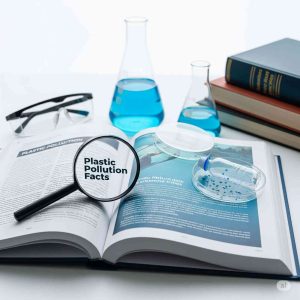
It affects land, rivers, oceans, wildlife, and even human health. But have you ever wondered—what is the main source of plastic pollution? While plastic comes in many forms and from many places, scientists agree that one source stands out above all: single-use plastic products.
In this article, we’ll explore the major causes of plastic pollution, the science behind it, and what we can do to tackle the problem. Plastic pollution science facts”Plastic Pollution Explained: Scientific Facts That Matter” Plastic Pollution Facts: Shocking Truths You Need to Know
1. Understanding Plastic Pollution
Unlike organic materials, plastics do not biodegrade. Instead, they break into microplastics, which persist in ecosystems for hundreds or even thousands of years. Plastic pollution science facts” Plastic Pollution Explained: Scientific Facts That Matter”
Plastics are cheap, versatile, lightweight, and durable—making them ideal for packaging, containers, and consumer goods. However, these very qualities make them hard to dispose of responsibly. Plastic pollution science facts” Plastic Pollution Explained: Scientific Facts That Matter” Plastic Pollution Facts: Shocking Truths You Need to Know
2. The Main Source: Single-Use Plastics
According to the United Nations Environment Programme (UNEP) and scientific studies, the main source of plastic pollution is single-use plastics—items designed to be used once and discarded immediately. Plastic pollution science facts” Plastic Pollution Explained: Scientific Facts That Matter” Plastic Pollution Facts: Shocking Truths You Need to Know
Examples of Single-Use Plastics:
-
Plastic bags
-
Water bottles
-
Food wrappers
-
Straws and stirrers
-
Disposable cutlery and plates
-
Packaging films
-
Takeaway containers
These items are convenient but rarely recycled. Once discarded, they clog waterways, litter streets, and wash into oceans. Plastic pollution science facts” Plastic Pollution Explained: Scientific Facts That Matter” Plastic Pollution Facts: Shocking Truths You Need to Know
Key Statistics:
Nearly 50% of that is single-use plastic.
3. Top Contributors to Plastic Pollution
Let’s break down where most plastic waste comes from:
A. Consumer Packaging (The Largest Contributor)
The consumer goods industry is the biggest user of single-use plastics. This includes:
-
Packaged food and drinks
-
Online shopping parcels
-
Cosmetic and personal care containers
Fact: Packaging accounts for about 40% of global plastic use, making it the leading source of plastic pollution.
B. Fast Food and Beverage Industry
Restaurants, cafes, and fast-food chains use vast amounts of plastic:
-
Cups, lids, straws, forks, containers Plastic pollution science facts” Plastic Pollution Explained: Scientific Facts That Matter”
-
Single-use condiment packets Plastic pollution science facts” Plastic Pollution Explained: Scientific Facts That Matter”
These items are rarely disposed of properly and often become litter. Plastic pollution science facts” Plastic Pollution Explained: Scientific Facts That Matter” Plastic Pollution Facts: Shocking Truths You Need to Know
C. Retail and Grocery Stores
- Supermarkets use plastic for:
-
Carry bags
-
Wrapping produce
-
Plastic pouches for grains and snacks
Even biodegradable alternatives are not widely adopted yet. Plastic pollution science facts” Plastic Pollution Explained: Scientific Facts That Matter”
D. Fishing and Marine Equipment
Known as ghost gear, this abandoned equipment traps marine animals and damages coral reefs. Plastic Pollution Facts: Shocking Truths You Need to Know
4. How Single-Use Plastics End Up in the Environment
Most single-use plastics are used and thrown away within minutes or hours. Here’s how they pollute Plastic Pollution Facts: Shocking Truths You Need to Know
🚯 Littering
Many people carelessly discard plastic items on roads, parks, and beaches. Wind and rain carry these items into nearby rivers and streams. Plastic pollution science facts” Plastic Pollution Explained: Scientific Facts That Matter”
🏞️ Improper Waste Management
In many developing countries, garbage is dumped in open fields or unprotected landfills. Wind and water carry plastics into rivers and oceans. Plastic pollution science facts” Plastic Pollution Explained: Scientific Facts That Matter”
🚢 Industrial Leakage and Shipping Waste
Plastic pellets, known as nurdles, spill from ships or factories and are swept into marine environments. Shipping waste also contributes to ocean plastic loads. Plastic pollution science facts” Plastic Pollution Explained: Scientific Facts That Matter”
🌀 Stormwater Runoff
Urban drainage systems often carry plastic waste from city streets to rivers, especially during storms. Plastic pollution science facts” Plastic Pollution Explained: Scientific Facts That Matter” Plastic Pollution Facts: Shocking Truths You Need to Know
5. Rivers as Plastic Highways to the Ocean
Rivers are major transport routes for plastic waste. According to The Ocean Cleanup project, just 10 rivers—including the Ganges (India) and Yangtze (China)—carry over 90% of plastic waste that reaches the ocean. Plastic pollution science facts” Plastic Pollution Explained: Scientific Facts That Matter”
Once plastics reach the ocean, they:
-
Harm marine life
-
Break into microplastics
-
Sink to the ocean floor or float in large garbage patches Plastic pollution science facts”Plastic Pollution Explained: Scientific Facts That Matter”
6. The Environmental Impact of Plastic Pollution
🐢 Wildlife Harm
-
Marine animals mistake plastic for food, leading to choking or starvation.
-
Turtles eat plastic bags, thinking they’re jellyfish.
🌱 Soil and Water Contamination
-
Microplastics enter the soil, reducing its fertility.
-
Toxic additives from plastics leak into groundwater. Plastic Pollution Facts: Shocking Truths You Need to Know
🌊 Ocean Pollution
-
Plastics form massive ocean garbage patches (e.g., the Great Pacific Garbage Patch).
-
Coral reefs get smothered by plastic waste, blocking sunlight and oxygen.
🧬 Human Health Risks
-
They can carry toxic chemicals that act as endocrine disruptors, affecting hormones.
-
People may ingest up to 5 grams of plastic per week—equal to a credit card. Plastic pollution science facts” Plastic Pollution Explained: Scientific Facts That Matter”
7. Plastic Pollution by Industry
Besides consumers, industries are also major polluters:
A. Textile Industry
-
Uses synthetic fibers like polyester and nylon.
-
Washing clothes releases microfibers into wastewater. Plastic Pollution Facts: Shocking Truths You Need to Know
B. Automotive and Construction
-
Use plastics in insulation, dashboards, pipes, and cables.
-
Improper disposal and wear release plastics into the environment. Plastic pollution science facts” Plastic Pollution Explained: Scientific Facts That Matter”
C. Agriculture
-
Uses plastic mulch films and irrigation pipes.
-
These degrade under sunlight, releasing plastic into soil. Plastic pollution science facts” Plastic Pollution Explained: Scientific Facts That Matter”
8. Solutions to Reduce Plastic Pollution
✅ Individual Actions
-
Avoid single-use plastic items.
-
Carry reusable bags, bottles, and utensils.
-
Choose products with minimal packaging.
-
Separate and recycle properly. Plastic pollution science facts” Plastic Pollution Explained: Scientific Facts That Matter”
✅ Industry Responsibility
-
Switch to biodegradable or compostable packaging.
-
Adopt Extended Producer Responsibility (EPR) models.
-
Use recycled plastic content in new products. Plastic pollution science facts” Pollution Explained: Scientific Facts That Matter”
✅ Government Policies
-
Ban or restrict single-use plastics.
-
Impose fines for littering and non-compliance.
-
Support plastic alternatives and waste management infrastructure. Countries like India, Kenya, and members of the EU have already implemented strict regulations on plastic use, leading to measurable progress. Plastic pollution science facts” Plastic Pollution Explained: Scientific Facts That Matter” Plastic Pollution Facts: Shocking Truths You Need to Know
